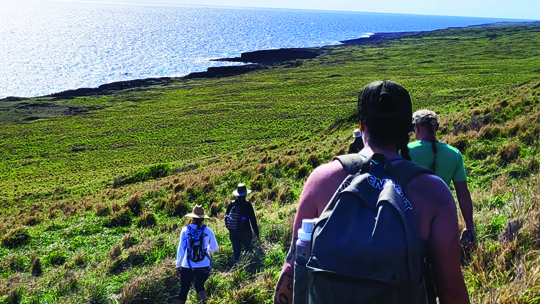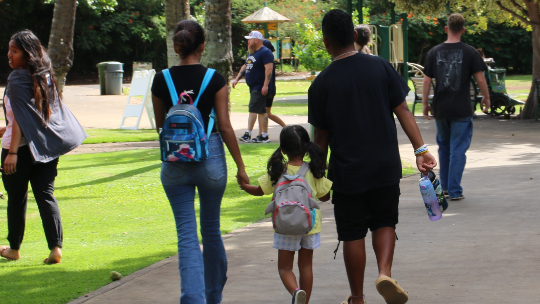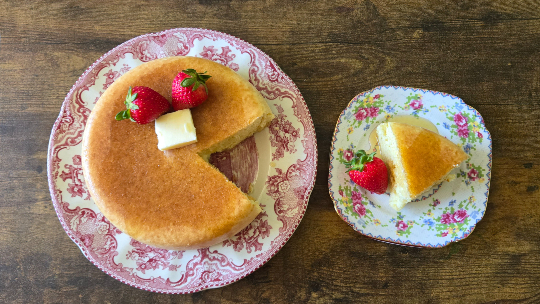Before the invention of cars and the modern roadways, Hawaiians used the trail system to get around their island. Remnants of these trails can be found on every island today.
On Hawaii Island, a lengthy trail system is preserved through the efforts of the National Park Service and volunteers dedicated to its historic and cultural significance.
The Ala Kahakai Trail is a 175-mile corridor that connects culturally and historically significant trails along the coastline (ala kahakai means “trail by the sea”) from Upolu Point at the northern tip of the island, down the Kona Coast, and all the way into Puna at the eastern boundary of Hawaii Volcanoes National Park. In 2000, the National Park Service designated the Ala Kahakai Trail a National Historic Trail.
Soon after, a group of volunteers was formed to help the National Park Service preserve the trail system. The nonprofit Ala Kahakai Trail Association, or ATA, is made up of volunteers, most of whom have ancestral ties to the trail.
“These are people whose family members had grown up with either a lineal connection to the lands the trail was on or had grown up using the trail to go fishing or go to the beach,” says Ethan Souza, ATA vice president. “They were worried about the preservation of these trail systems and still having access to them.”

Community members descend the steep trail along the Pohina Pali toward the coastline of Kaunamano, Kau.
Part of the challenge in preserving the trail system involves managing development that could impact or even destroy portions of the trail. In Kohala and North Kona, the trail is preserved around and through subdivisions and resorts that have sprung up. Farther south, the ATA helped the county acquire land around Kau to spare it from development.
“Our goal is to help communities take stewardship of the resources in their areas,” Souza says. “For us, that means making sure that these ancient historic, archaeological, and cultural sites on the trail and adjacent to it aren't developed. That would be the worst-case scenario for the lineal descendants, cultural practitioners, or people who want to respectfully interact with the trail.”
Souza says preservation includes caring for the plant and animal life along the trail. “There are a lot of native and, in some cases, quite rare and endangered plants. In our coastal areas, you see a lot of migratory seabirds like kolea, ulili, and even kioea, which is a little bit more endangered. There’s a potential threat from non-native species like mongoose and feral cats that pose a risk to native species.”
The preservation efforts don’t include keeping people off the trail. Souza says hikers and nature lovers can come and experience the Ala Kahakai Trail for themselves.
“One of the best things people can do is scrub down their shoes before going on the trail to make sure they’re not bringing seeds from harmful plants. Then go and enjoy walking the trail and see the same things that people would have seen hundreds of years ago.”
Photos courtesy Ala Kahakai Trail Association




